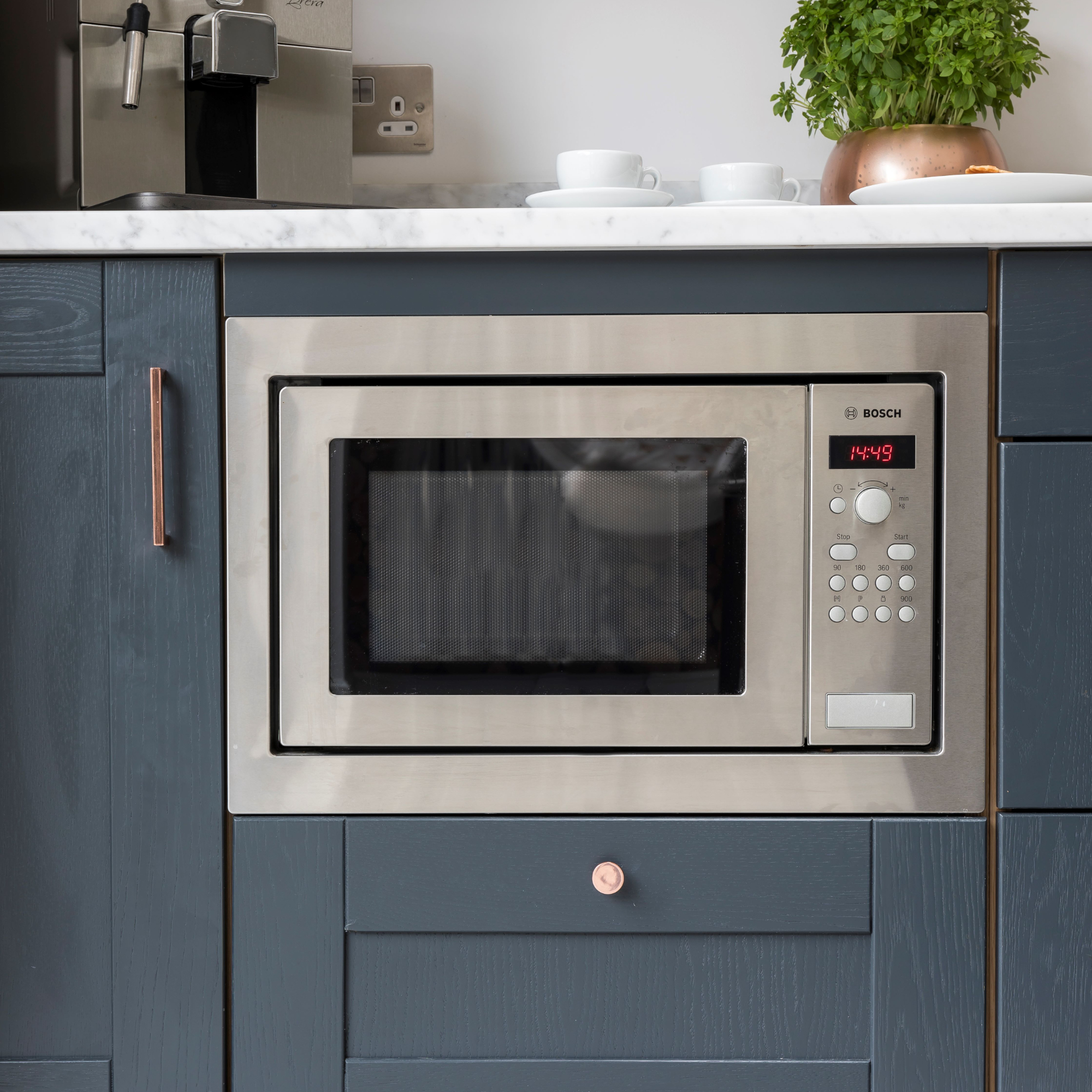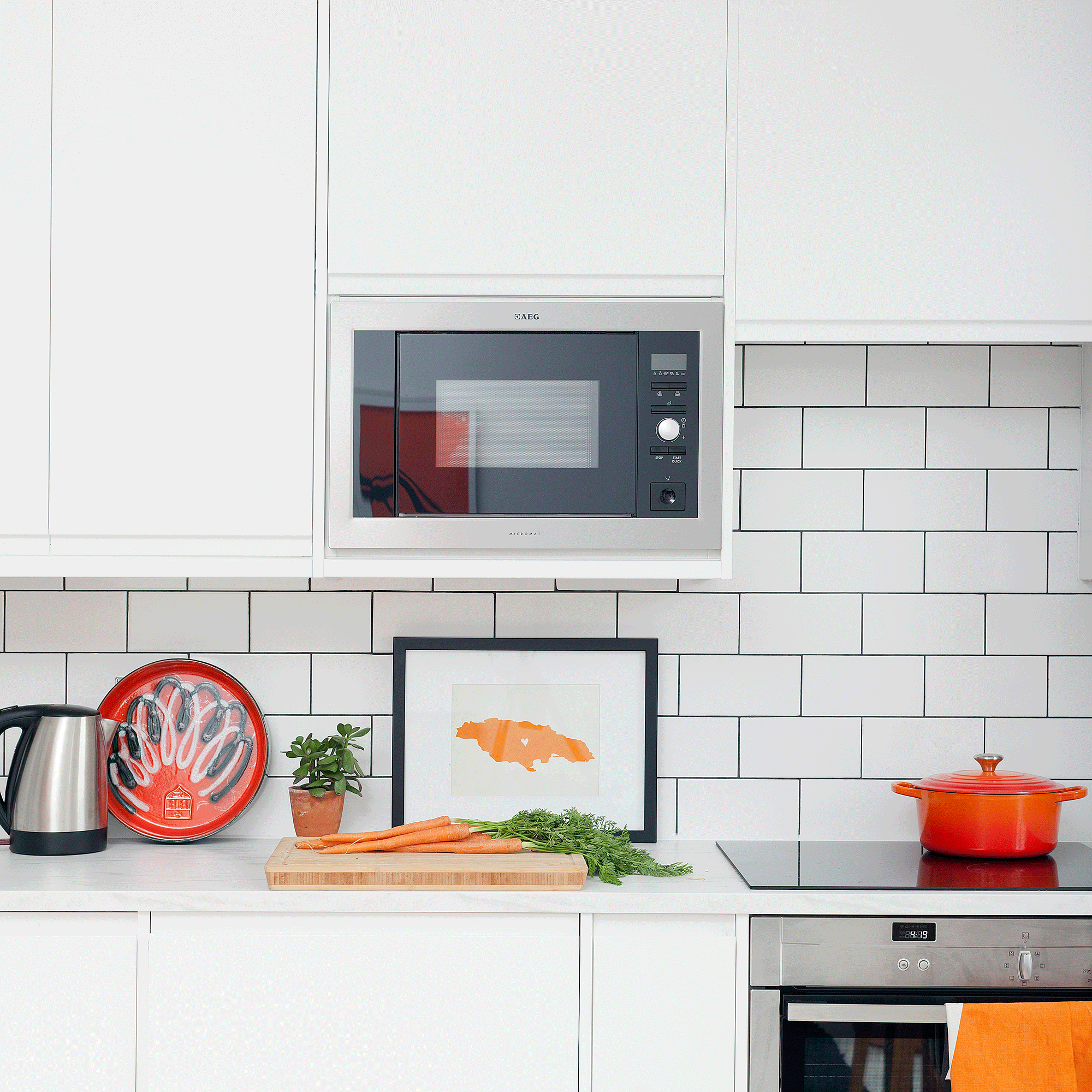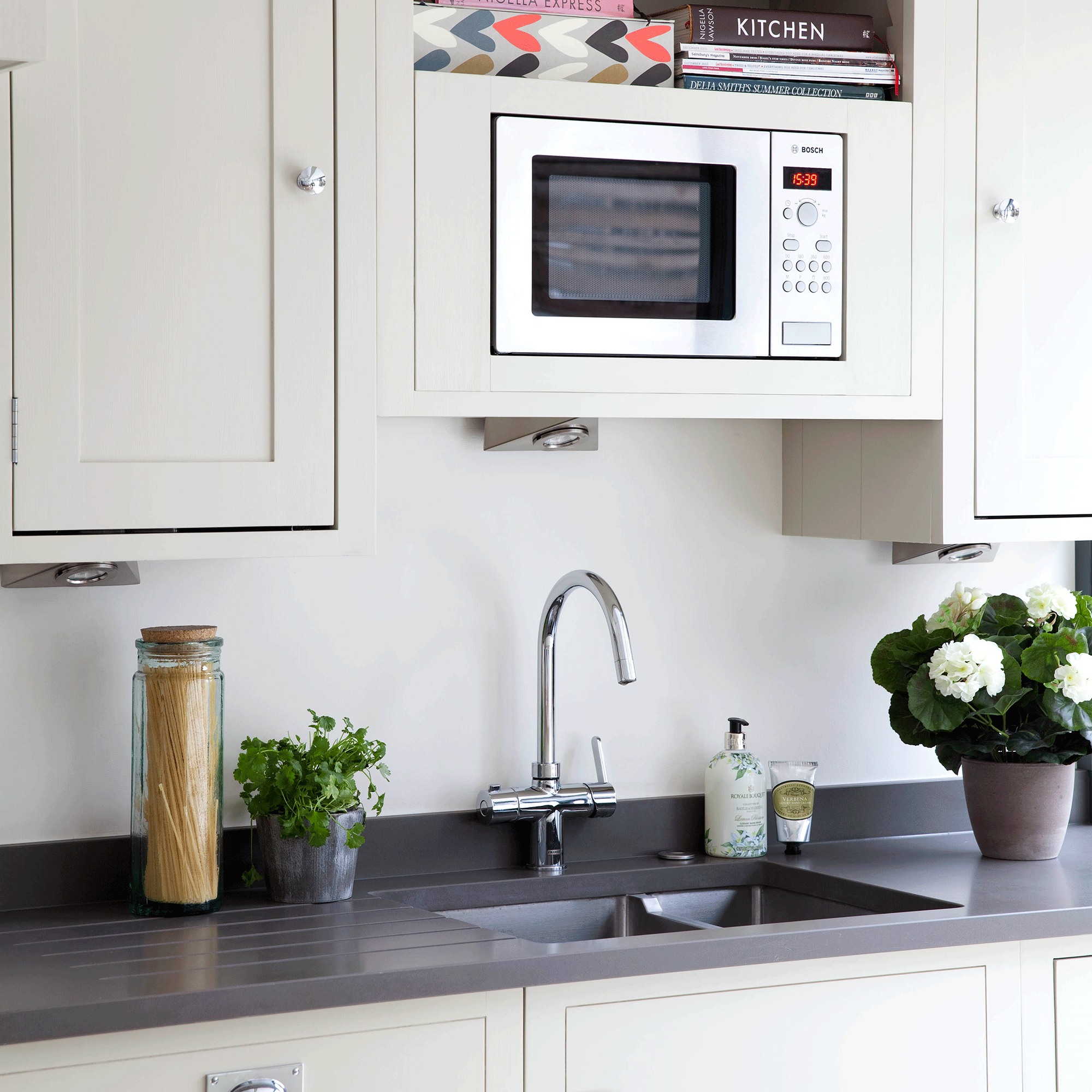The forgotten part of your microwave you're not replacing enough – 'it's not common knowledge'
Even this often-overlooked component deserves a little TLC


We'd be lying if we said we didn't come across a couple of new kitchen discoveries now and then, but finding out about microwave filters has got to be the icing on the cake as far as appliance mysteries go.
That's right. The best microwaves will always have filters – grease filters and charcoal filters – which can typically be located at the bottom or back of your microwave. Chances are you've seen it before, but you might not have realised it was a priority area to tackle when cleaning a microwave and it also needs replacing.
Don't worry if you've never really paid much attention to microwave filters before - you're not alone on this. That's why we've asked the experts how often you should be cleaning and replacing these filters to ensure your microwave lasts for years to come.

What are microwave filters?
'It's not common knowledge but microwave filters are key components of microwaves that help trap and remove grease, bad smells and other particles generated during cooking in this appliance,' begins Fantastic Services' appliance technician, David Miloshev.
Dennis Digwa, appliance expert at RGBDirect explains further that 'microwave filters keep the air within the microwave oven clean and stop grease and food particles from getting into the internal parts of the machine.'
Microwaves will typically have two types of filters:
- Grease filter – 'This filter is designed to capture grease and other cooking by-products to prevent them from entering the ventilation system,' begins Dennis. 'Grease filters are often made of metal or a combination of metal and charcoal.'
- Charcoal filter – 'Not all microwave filters, but if they do, these filters are responsible for trapping odours that result from cooking,' explains Dennis. 'Charcoal filters are usually used in recirculating venting systems.'
The location of your microwave filters will vary based on your microwave's brand or type, however, they're typically located on your appliance's back wall, above the cooking surface, or underneath it. When in doubt, refer to your microwave's manual.

How often should you clean and replace microwave filters?
As far as regular cleaning and maintenance goes, it will also depend on how often you use your microwave.
However, considering the cheap cost of running a microwave (as well as its sheer ease and convenience), we can be safe to assume it's at least a couple of times a week.

Grease filters
For grease filters, David says, 'If you use your microwave moderately, for example around 2 to 3 times per week, you'll need to clean the grease filter every 2 to 3 months.'
'If you use it more regularly, such as 4 to 6 times per week, you'll need to clean them every 1 to 2 months. If you use it more frequently, such as every day, you'll need to clean the grease filter every month.'
You can clean your microwave's grease filter by either handwashing it or putting it in the dishwasher. However, always check with the manufacturer's instructions and avoid blindly following just any TikTok viral microwave filter cleaning hack you see.

Charcoal filters
Charcoal filters, on the other hand, should only ever be replaced and never washed.
'In contrast to grease filters, charcoal filters need to be replaced entirely rather than cleaned, because they lose their effectiveness over time and lost their odour absorption capabilities,' explains David.
'If your appliance has charcoal filters and you use it moderately, you'll need to replace them every 6 to 12 months. If you use it regularly, you'll need to replace the charcoal filter every 3 to 6 months and if you use your microwave frequently, you'll need to replace the charcoal filter every 2 to 3 months.'

Alternatively, some microwave models may have indicator lights or messages that let you know when it's time to clean or replace the filters.
Also, David adds that if you 'notice a significant decrease in performance, an increase in unpleasant smells or visible grease buildup, it's best to check as you'll possibly need to replace the filters sooner than the recommended intervals.'
FAQs
Where are microwave filters located?
Grease filters are usually located on the bottom or the back of the microwave, just behind the grill or vent.
Charcoal filters will typically be located near the grease filter behind a decorative vent cover or grill.
However, if you're struggling to locate the filters, refer to your appliance's manual.
Are microwave filters washable?
Microwaves will typically have two types of filters: grease filters and charcoal filters. Grease filters are the only type of filter that is washable, while charcoal filters must only be replaced.
Are microwave filters dishwasher safe?
Some grease microwave filters are dishwasher safe, however, it's best to always check your specific model's manual to be sure.
Charcoal filters, on the other hand, should never be washed or put in a dishwasher.
All in all, 'regular cleaning and replacement will be crucial for the optimal performance of your appliance and to prevent the accumulation of grease, which can affect your microwave's efficiency,' says David.
And of course, at the end of the day, it'll be safest to refer to your microwave's manual for specific instructions and guidance on how best to tackle your microwave filter cleaning and replacement schedule.
'If you can't find the handbook any more, you may usually locate it on the manufacturer's website or get help from their customer service,' concludes Dennis.
Get the Ideal Home Newsletter
Sign up to our newsletter for style and decor inspiration, house makeovers, project advice and more.

Jullia was Ideal Home’s Junior Writer from 2022-2024 and the Ideal Home Certified Expert in Training on Vacuums having spent over 60 hours testing different models. She’s always loved all things homes and interiors, graduating with a bachelor’s degree in Architectural Studies from the University of Nottingham where her love for writing blossomed following her internship at ArchDaily. Now focused on home tech and cleaning, Jullia works on writing features and explainers to help people make the most of their home appliance investments, putting the newest launches through their paces. When she isn’t writing, she loves exploring the city, coffee shop hopping, and losing hours to a cosy game or book.
-
 Will a conservatory add value to your home and how can you maximise it?
Will a conservatory add value to your home and how can you maximise it?This is what the pros say
By Amy Reeves
-
 I’ve been looking for a new signature scent for my home and The White Company's new fragrance is the exact summer holiday smell I needed
I’ve been looking for a new signature scent for my home and The White Company's new fragrance is the exact summer holiday smell I neededSantorini smells fresh, summery and sophisticated
By Kezia Reynolds
-
 How to remove algae from garden walls in five steps – and the cleaning product experts rave about for tackling it fast
How to remove algae from garden walls in five steps – and the cleaning product experts rave about for tackling it fastExperts share their top tips for getting garden walls algae-free
By Katie Sims